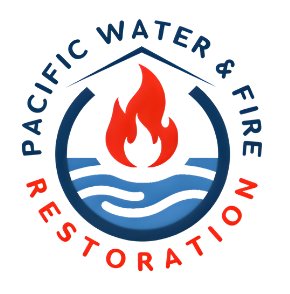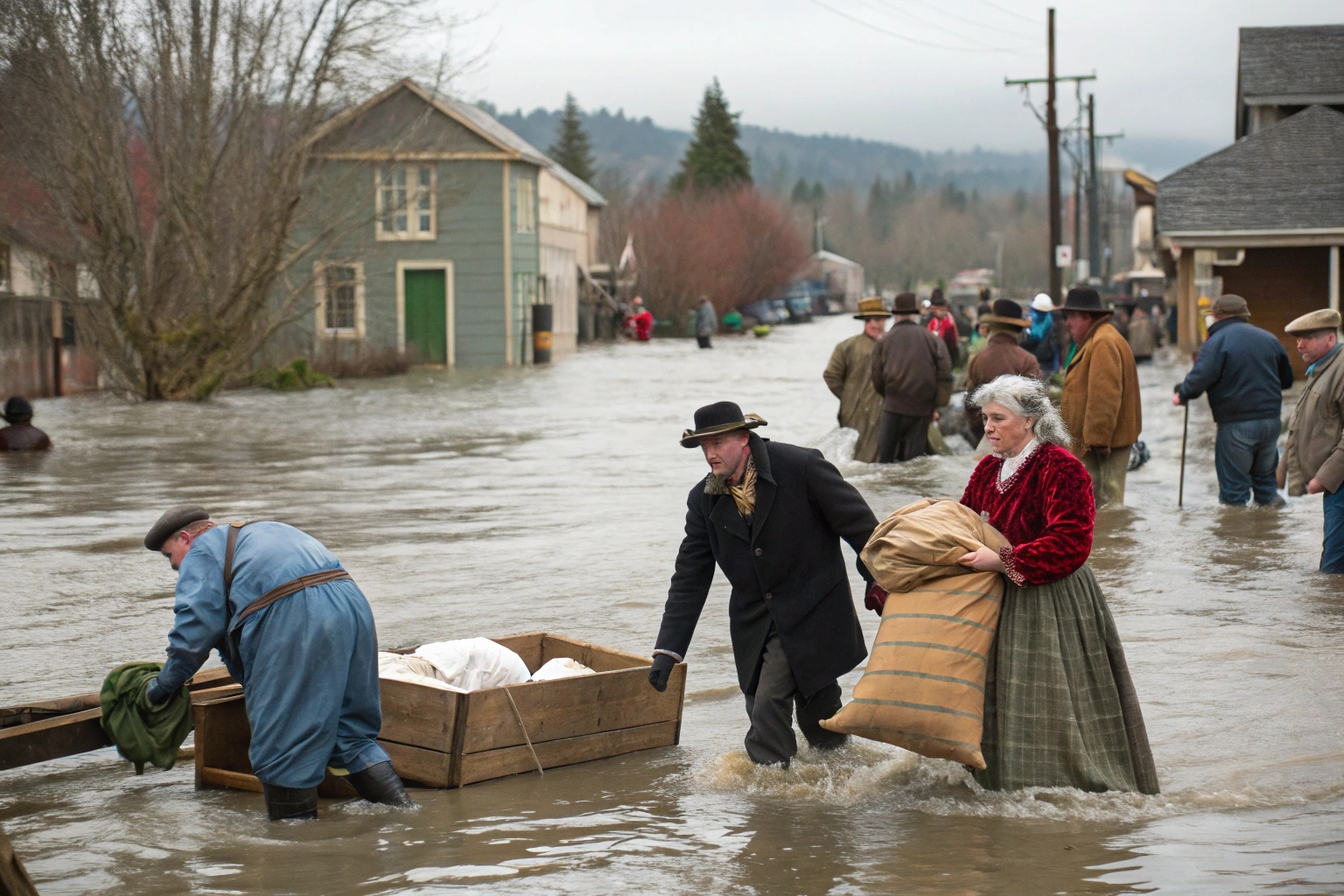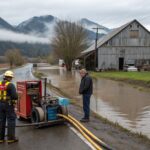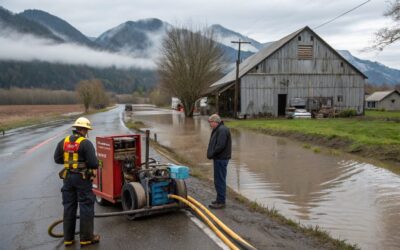For residents of Independence, Oregon, the Willamette River is both a historic centerpiece of community identity and an occasional source of significant challenges. Located in the heart of the Willamette Valley, Independence has developed a unique, community-oriented approach to flood preparation, response, and recovery that can serve as a model for other river communities. At Pacific Water & Fire Restoration, we’ve worked alongside Independence residents through various flood events, and we’ve seen firsthand how this tight-knit community comes together when waters rise.
Independence’s Unique Flood Profile
Independence faces specific flood challenges related to its geographic location and historical development patterns that shape both its vulnerabilities and its response strategies.
Geographic and Historical Context
The city of Independence sits along the banks of the Willamette River, with portions of the community developed in the historic floodplain. This proximity to water has shaped the town’s development since its founding in the 1840s. Unlike communities facing primarily flash flooding, Independence typically experiences riverine flooding that develops over days as heavy winter and spring rains fill the Willamette River watershed.
Historical Flood Events:
- December 1964 Christmas Flood: Devastated parts of downtown Independence
- February 1996 Willamette Valley Flood: Caused significant damage to properties near the river
- January 2012 Floods: Affected several riverside properties and parks
- April 2019 High Water Event: Required sandbagging in vulnerable neighborhoods
According to Polk County Emergency Management data, approximately 15% of Independence properties lie within either the 100-year or 500-year floodplain, creating an ongoing need for community-based preparation and response.
Ash Creek Considerations
While the Willamette River presents the most visible flood risk, Ash Creek, which flows through Independence before joining the Willamette, creates additional challenges:
- Can back up during high Willamette River levels
- Responds more quickly to localized heavy rainfall
- Affects different neighborhoods than river flooding
- Has more limited monitoring systems
Community-Based Preparation Strategies
Independence has developed several innovative community approaches to flood preparation that combine municipal leadership with neighborhood involvement.
The Independence Flood Watch Network
One of Independence’s most effective flood preparation tools is its volunteer-based Flood Watch Network. This program:
- Trains community volunteers to monitor creek and river levels
- Creates neighborhood-based communication chains
- Identifies vulnerable residents who may need assistance
- Coordinates with city emergency management
- Conducts annual preparedness workshops
Local Resource: To join the Independence Flood Watch Network, contact Independence Emergency Management at (503) 838-1212 or visit City Hall.
Neighborhood Preparation Teams
Independence has organized several neighborhood-based preparation teams that focus on specific geographic areas:
- Riverside Neighborhood Team: Focuses on properties along the Willamette
- Ash Creek Watershed Group: Monitors and prepares along the creek
- Downtown Business Continuity Team: Helps historic downtown businesses prepare
- Mobile Home Community Network: Addresses unique needs of manufactured housing areas
These teams conduct regular preparation activities including:
- Annual storm drain clearing events
- Sandbag filling and distribution practice
- Vulnerable resident identification
- Equipment and resource inventories
- Communication system testing
Pro Tip: Independence Public Works maintains a community sandbag station at 840 Monmouth Street that becomes active during flood watches. Residents are encouraged to fill their own sandbags when flooding threatens, with city staff providing assistance during business hours.
Before the Flood: Individual Home Preparation
While community efforts provide essential support, individual home preparation remains crucial for Independence residents, especially those in flood-prone areas.
Understanding Your Property’s Flood Risk
Start by assessing your specific flood vulnerability:
- Check FEMA flood maps: Available through Polk County Planning Department or FEMA’s Flood Map Service Center
- Review historical flooding: Talk to neighbors about previous events
- Identify water entry points: Basements, crawl spaces, doors, windows
- Consider elevation: Even small differences in elevation can significantly impact flood risk
Local Context: Independence’s historic downtown area has specific flooding patterns influenced by both river levels and stormwater system capacity. Businesses and homes in this area should maintain close contact with the Downtown Business Continuity Team for specialized advice.
Essential Home Modifications
Consider these flood-resistant modifications for properties in flood-prone areas:
- Install check valves: Prevent sewer backups during high water
- Elevate utilities: Raise electrical panels, water heaters, and appliances
- Apply waterproofing compounds: Seal basement walls and foundation
- Create barriers: Consider removable flood barriers for doorways
- Improve drainage: Ensure water flows away from your foundation
- Modify landscaping: Create swales or rain gardens to direct water
Safety Warning: Always consult qualified professionals for electrical modifications or significant structural changes to ensure work meets safety codes and doesn’t create new hazards.
Flood Insurance Considerations
Independence residents should understand their flood insurance options:
- Standard homeowner’s policies DO NOT cover flooding
- National Flood Insurance Program (NFIP) policies are available to all Independence residents
- Properties in flood zones with federally-backed mortgages require flood insurance
- 30-day waiting period typically applies before coverage begins
- Consider contents coverage in addition to building coverage
Important Note: Even properties outside mapped flood zones can experience flooding. In fact, over 25% of NFIP claims come from properties outside high-risk flood areas.
During a Flood: Community Response
When flooding threatens Independence, the community activates its coordinated response plan.
City Response Resources
Independence has developed several municipal resources for flood response:
- Emergency Operations Center: Activated during significant flood events
- Public Works Flood Teams: Deploy pumps and temporary barriers
- Community Shelter: Usually established at Independence Elementary School
- Public Information System: Includes alerts through Polk County’s emergency notification system
- Volunteer Coordination Center: Organizes community response efforts
Local Resource: Sign up for Polk County emergency notifications at www.co.polk.or.us/sheriff/emergency-management.
Neighborhood Support Networks
Independence’s neighborhood-based approach becomes especially valuable during active flooding:
- Block captains check on vulnerable residents
- Resource sharing for pumps and flood barriers
- Volunteer sandbag teams assist elderly and disabled residents
- Transportation assistance for those needing evacuation
- Pet and livestock coordination for displaced animals
Pro Tip: Independence maintains several community sandbagging stations that activate during flood events. Locations are announced through the city’s emergency alert system.
Evacuation Guidelines
If evacuation becomes necessary:
- Follow recommended routes: Main Street and Monmouth Street serve as primary evacuation routes
- Bring emergency supplies: Pack for at least three days away from home
- Secure your property: Turn off utilities if time permits
- Register at evacuation centers: Helps officials track displaced residents
- Never drive through floodwaters: Just 12 inches of moving water can float a vehicle
After the Flood: Community-Based Recovery
Independence’s community spirit particularly shines during the recovery phase, with organized support systems helping affected residents.
Immediate Community Assistance
Independence has developed several community-based recovery resources:
- Volunteer Cleanup Teams: Organized by neighborhood zones
- Equipment Share Program: Provides access to dehumidifiers, fans, and cleaning tools
- Recovery Resource Center: Usually established at the Independence Civic Center
- Meal Support Programs: Coordinated through local churches
- Temporary Housing Network: Connects displaced residents with housing options
Local Resource: The Independence Community Foundation maintains a Flood Recovery Fund that provides emergency grants to affected residents. Applications become available at the Recovery Resource Center after major events.
Professional Assessment and Recovery
While community volunteer efforts provide valuable immediate assistance, professional assessment and restoration remain essential for safe, complete recovery.
Critical Assessment Areas
Professional restoration services should evaluate:
- Structural integrity: Hidden damage can compromise building safety
- Electrical systems: Flood-affected wiring may pose fire hazards
- Mold potential: Begins growing within 24-48 hours after flooding
- Sewage contamination: Requires specialized cleaning protocols
- Hidden moisture: Can cause ongoing damage if not properly addressed
Pro Tip: At Pacific Water & Fire Restoration, our IICRC-certified technicians use advanced moisture mapping technology to detect water in wall cavities, under flooring, and other hidden areas where mold can develop if left untreated. This is particularly important for Independence’s many historic homes with complex construction.
The Professional Restoration Process
For flood-damaged properties, professional restoration typically includes:
- Water extraction: Removing standing water with specialized equipment
- Sanitization: Addressing contaminants in floodwater
- Structural drying: Using industrial dehumidifiers and air movers
- Mold prevention: Applying antimicrobial treatments
- Deodorization: Eliminating flood-related odors
- Restoration: Repairing or replacing damaged materials
Important Note: Many DIY approaches to flood cleanup can inadvertently seal in moisture or fail to address contamination issues. Professional restoration typically provides more thorough, lasting results, especially for significant flooding.
Insurance Navigation and Documentation
Navigating insurance claims after flooding:
- Document everything: Take extensive photos before cleanup
- Save samples: Keep swatches of damaged materials like carpet
- Track expenses: Keep receipts for all recovery-related costs
- Record volunteer hours: May count toward matching funds requirements
- Work with adjusters: Provide access but advocate for thorough inspection
The Independence Chamber of Commerce occasionally offers flood insurance workshops to help residents understand their coverage and claims process.
Long-Term Community Resilience
Independence continues to build long-term flood resilience through several ongoing initiatives.
Floodplain Management Improvements
The city has implemented several floodplain management strategies:
- Stricter building codes for new construction in flood-prone areas
- Property buyout programs for repeatedly flooded properties
- Green infrastructure investments that improve natural water absorption
- Stormwater system upgrades to handle increased capacity
- Riverfront Park design improvements that accommodate periodic flooding
Ongoing Preparation and Education
Independence maintains several programs to keep flood awareness high:
- Annual Flood Preparation Fair: Typically held in October
- School-based education programs: Teaching students about flood safety
- Business continuity workshops: Helping local businesses prepare
- Volunteer training sessions: Keeping the Flood Watch Network ready
- Biannual flood response exercises: Testing community systems
Conclusion: The Independence Spirit of Resilience
What makes Independence’s approach to flooding remarkable is the seamless integration of municipal resources, neighborhood networks, and individual preparation. This community-based model has proven effective through multiple flood events, with each experience further strengthening both formal and informal support systems.
At Pacific Water & Fire Restoration, we’re proud to be part of Independence’s comprehensive approach to flood recovery. While the community’s volunteer spirit provides invaluable immediate support, our professional restoration services help ensure properties are safely and completely restored, preventing long-term issues like mold growth and structural weakening.
The lessons from Independence demonstrate that effective flood recovery isn’t just about technical solutions—it’s about neighbors helping neighbors, supported by professional expertise when needed. This balanced approach has made Independence particularly resilient in the face of flooding challenges and continues to strengthen the community’s preparedness for future events.
Need Flood Recovery Assistance or Want to Prepare Better?
If you’re dealing with flood damage or want to schedule a preventive assessment of your home’s flood vulnerabilities, our team of IICRC-certified restoration professionals is available 24/7.
For emergency service: Call 503-201-7337
For preventive assessments: Schedule a free consultation to identify and address potential vulnerabilities before the next flood season.
Remember, when it comes to flooding in Independence, preparation and community support are your first lines of defense, but should water find its way into your home, professional restoration is your best path to complete recovery.
Pacific Water & Fire Restoration is a full-service property restoration company serving Portland and surrounding communities including Independence. Our IICRC-certified technicians are available 24/7 for emergency water extraction, structural drying, and complete restoration services for both residential and commercial properties.









